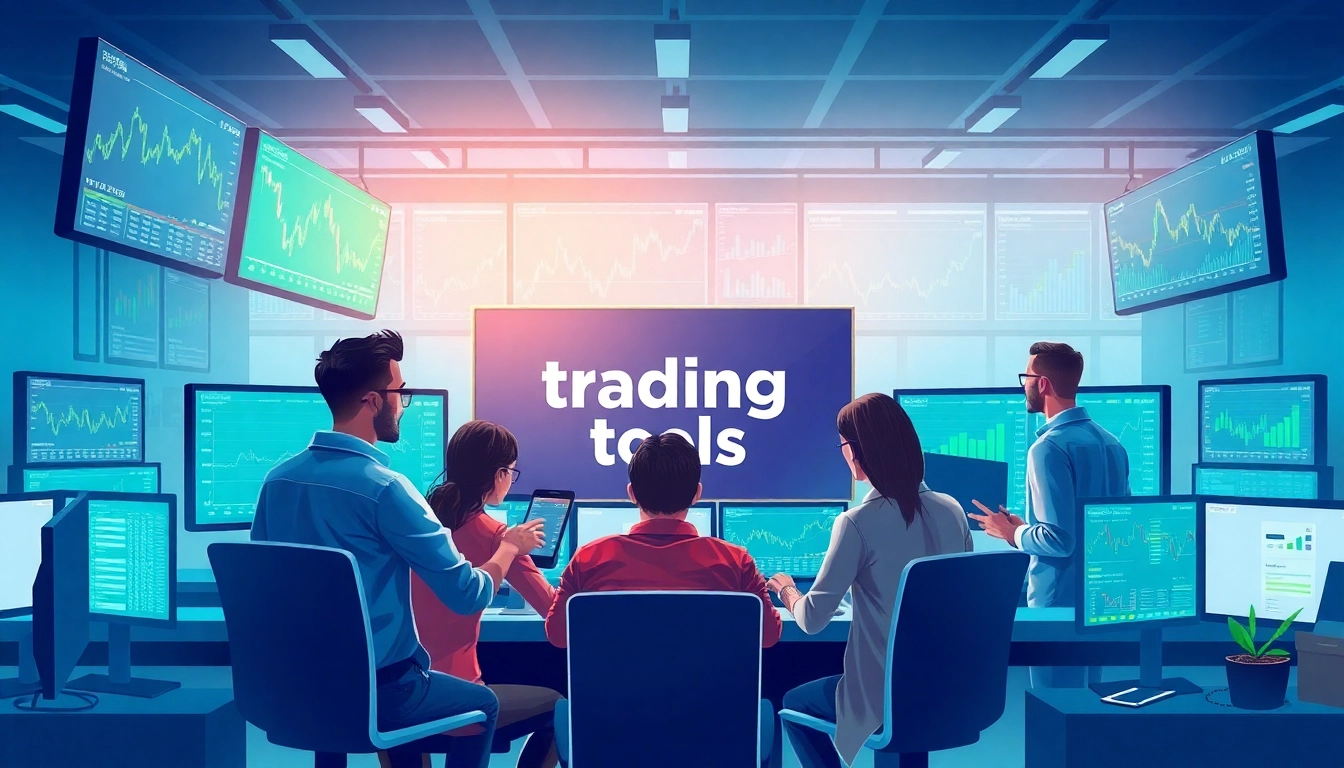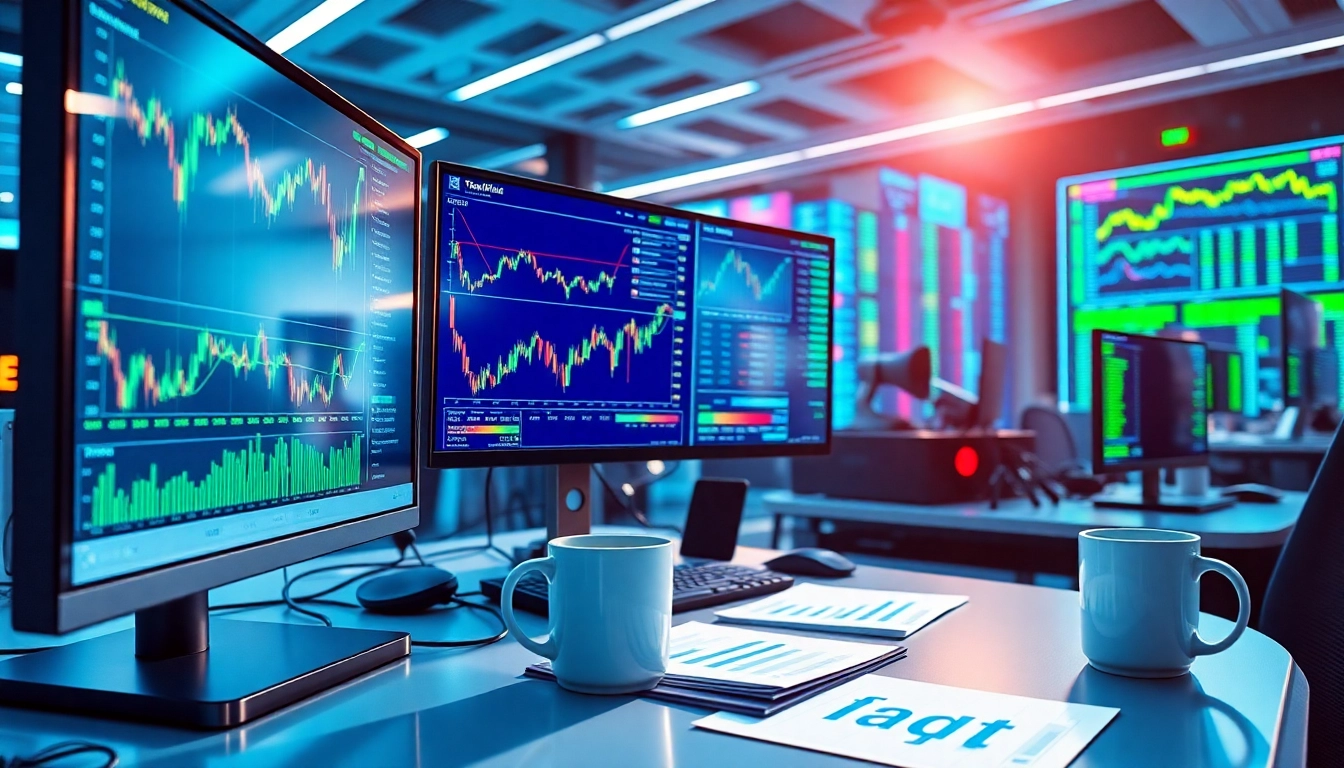Understanding Trading Tools and Their Importance
In the fast-paced world of financial markets, traders rely on various trading tools to enhance their strategies and make informed decisions. From technical analysis systems to automated trading platforms, the right tools can significantly impact a trader’s success. As we delve into the significance of trading tools, it’s crucial to understand what they are, why they are necessary, and the various tools available to modern traders.
What Are Trading Tools?
Trading tools encompass a wide range of applications and resources designed to help traders analyze market conditions, execute trades, and manage risk more effectively. These tools can be as simple as a financial news website or as complex as fully integrated trading platforms supporting algorithmic trading. They perform critical functions such as data analysis, strategy backtesting, and trade execution, providing traders with the insights and capabilities needed to navigate the ever-evolving financial landscape.
Why Traders Need the Right Tools
The importance of using the right trading tools cannot be overstated. First and foremost, they help traders improve their accuracy in decision-making. Without the proper tools, a trader may miss out on critical signals or make poorly timed trades, leading to significant financial losses. Moreover, trading tools enhance efficiency; they automate many repetitive tasks, allowing traders to focus on developing strategies or improving their knowledge of market dynamics. In essence, using effective tools can mean the difference between consistent gains and substantial losses in trading.
Overview of Popular Trading Tools
As the trading ecosystem continues to evolve, several tools have emerged as essential for traders of all experience levels. Popular trading tools include:
- Charting Software: Applications like TradingView or MetaTrader provide advanced charting capabilities that help traders analyze price movements and trends.
- Economic Calendars: These tools display upcoming economic events, enabling traders to anticipate market volatility.
- Trading Bots: Automated programs that execute trades based on predefined rules, which can optimize trading strategies.
- Backtesting Tools: Applications that simulate historical trading conditions allowing traders to evaluate their strategies before live implementation.
- Risk Management Tools: Calculators and software designed to help traders set proper stop-loss and take-profit levels, enhancing their risk management strategies.
Types of Trading Tools You Should Consider
Charting and Analysis Tools
Charting tools are paramount for any trader, serving as the foundation for technical analysis. They allow traders to visualize price movement and identify patterns that can signal potential trading opportunities. Key features often found in premier charting software include various chart types (candlestick, line, bar), technical indicators (moving averages, Bollinger Bands), and drawing tools for trend lines and Fibonacci retracement.
For example, applications like TradingView provide a user-friendly interface, where traders can customize their charts with numerous indicators and share their insights with the community. This collaborative aspect fosters an environment of shared knowledge, essential for both novice and experienced traders alike.
Trading Platforms and Execution Tools
Trading platforms serve as the gateway to the markets, enabling traders to execute orders, monitor positions, and access market data in real-time. Selecting the right platform is critical; factors to consider include the ease of use, available asset classes, execution speed, and fees associated with trades.
Platforms like MetaTrader 4 and 5 are widely respected for their comprehensive feature sets, offering tools for both manual and automated trading. They come equipped with various analytical tools, extensive libraries of indicators, and support for developing custom scripts or trading algorithms.
Risk Management and Calculator Tools
Risk management is a key reason many traders fail. Without the ability to effectively manage risk, even the most skilled traders can suffer devastating losses. Trading calculator tools assist traders in calculating desired position sizes, risk-to-reward ratios, and profit targets based on their trading strategies. These tools provide quantitative insights, ensuring traders make decisions grounded in rigorous analysis rather than emotion.
Additionally, tools that help track and analyze performance can uncover patterns in a trader’s behavior, assisting in refining and improving processes for better decision-making.
Setting Up Your Trading Workspace
Essential Hardware for Trading
A well-equipped trading workspace enhances productivity and efficiency. Essential hardware considerations include:
- Monitors: Dual or triple-monitor setups allow for increased screen real estate, facilitating the simultaneous viewing of charts, news feeds, and trading platforms.
- Computer Specs: A powerful computer with adequate RAM and a solid-state drive (SSD) can handle multiple applications running simultaneously without lag.
- Ergonomic Furniture: A comfortable chair and desk can improve focus and reduce physical strain during long trading sessions.
Software Applications and Tools
In addition to hardware, the right software applications play an integral role in establishing a productive trading environment. Essential applications include:
- Market Analysis Software: Such as Bloomberg Terminal or Reuters Eikon provide in-depth market analysis and news, which can influence trading decisions.
- Trade Execution Platforms: Platforms must integrate flawlessly with your brokerage to ensure quick and efficient order execution.
- Communications Tools: Programs like Slack or Discord allow for strategic discussions with other traders, helping share insights and best practices.
Creating an Optimal Trading Environment
Beyond hardware and software, the environment significantly affects trading performance. Traders should consider the following:
- Lighting: Adequate natural lighting or adjustable artificial lighting can reduce eye strain and increase concentration.
- Minimizing Distractions: An organized workspace with minimal distractions can help maintain focus during trading hours.
- Setting Up Alerts: Configuring alerts for key price levels or news events ensures traders remain informed without constantly monitoring their screens.
Tips for Choosing the Right Trading Tools
Evaluating Features and Functionality
Choosing the right trading tools requires careful evaluation of features and functionality. Traders should begin by identifying their specific needs based on their trading style—whether day trading, swing trading, or long-term investing. Essential features to consider include:
- User Interface: Is the tool user-friendly? Complexity can hinder effective use.
- Integration Capabilities: Does the tool integrate well with other apps and platforms?
- Customizability: Can indicators and reports be tailored to fit personal trading strategies?
Comparing Costs and Subscriptions
Cost is often a determining factor when choosing trading tools. Many popular platforms offer tiered pricing models with variations in features. Traders should consider:
- Free Trials: Take advantage of free trials to assess the platform’s functionalities and fit.
- Subscription Packages: Analyze what is included in each subscription tier to make an informed decision about value for money.
Reading Reviews and Recommendations
Researching reviews and seeking recommendations from seasoned traders can provide insights into the effectiveness and reliability of trading tools. Look for:
- Online Forums: Platforms like Reddit or TradingView’s community section where traders share experiences.
- Expert Blogs: Follow trusted financial websites and blogs that review trading tools systematically.
Maximizing Your Trading Performance with Tools
Integrating Tools into Your Trading Strategy
Once you have chosen the right trading tools, the next step is integrating them into your strategy. This involves setting up the necessary tools to align with your trading goals:
- Establish a Routine: Develop a routine that incorporates the tools into your daily trading processes.
- Utilizing Alerts and Signals: Configure alerts and signals for important market movements to aid timely trading.
Monitoring and Analyzing Your Trades
Effective monitoring and analysis of trades are crucial for success over the long term. Utilizing trading journals and performance tracking software can provide valuable insights:
- Position Tracking: Track entered trades, exit points, and the rationale behind trades to refine strategies.
- Performance Metrics: Assess metrics such as win/loss ratios and average trade duration to identify areas for improvement.
Continuous Learning and Adaptation to New Tools
The trading landscape is constantly changing; therefore, adaptability is essential. Traders should stay informed about new tools and technologies, continuously seeking to improve their systems and processes:
- Ongoing Education: Participate in webinars or online courses that cover advanced trading technologies and tools.
- Community Engagement: Engage with other traders through groups or seminars to learn about new developments in trading tools.



